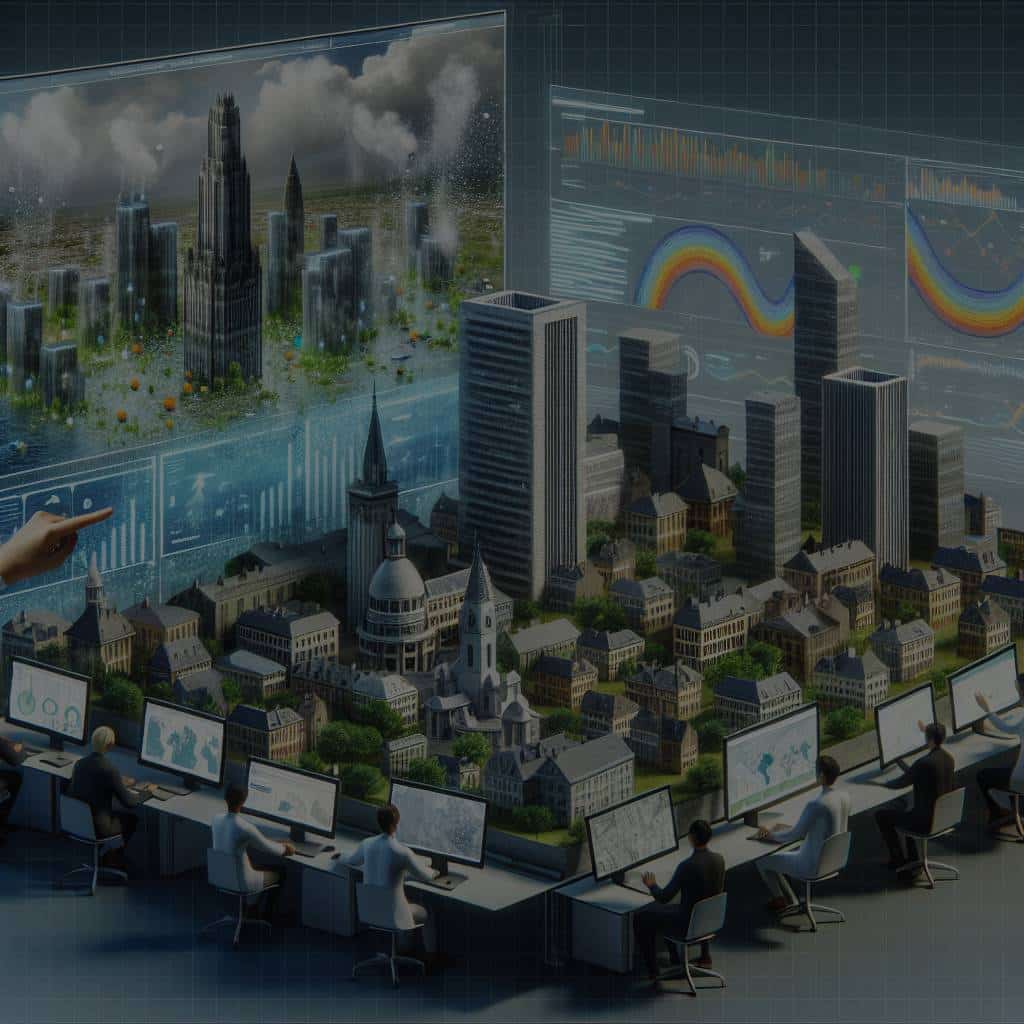Can Digital Twin Modeling Simulate the Impact of Climate Change on Buildings?

Climate change is a significant concern for cities across the globe. The rising temperatures, extreme weather events, and increased sea levels pose severe threats to the urban infrastructure. Can digital twin modeling, an advanced technology tool, help us predict and manage these challenges concerning our buildings? This article will explore the concept of digital twin modeling and its potential role in simulating the impact of climate change on buildings.
Understanding Digital Twin Modeling
Before delving into the details of how digital twin technology can influence our struggle against climate change, it is vital to understand what digital twin modeling entails. ‘Digital Twin’ is a concept from the field of digital technology and refers to a virtual replica of a physical entity. This clone or ‘twin’ is created using data from sensors embedded in the physical object and can mirror its activity, status, and performance in real-time.
In parallel : Is AI Essential in Creating More Accurate Predictive Models for Stock Markets?
In the context of buildings, a digital twin is a highly detailed, 3D digital replica of the building. Building Information Modeling (BIM) tools can create this replica, using data from various sensors installed in and around the building. The data can include information related to the building’s structure, materials, energy usage, occupancy, and even the surrounding environment.
The Impact of Climate Change on Buildings
Climate change is not just a future threat; its impacts are already being observed globally. These impacts are particularly pronounced in urban areas where concentrated populations reside and work. Buildings, as vital components of urban infrastructure, are significantly affected by climate change.
In parallel : What’s the Future of Biometric Technology in Identity Verification Processes?
Rising temperatures can exacerbate the heat island effect in cities, leading to increased energy consumption in buildings. Higher temperatures can also lead to material degradation in buildings, leading to shorter life-spans and higher maintenance costs. Extreme weather events such as storms, floods, and heatwaves can damage buildings and disrupt their functions. Furthermore, increased sea levels can lead to flooding in coastal cities, threatening the integrity of buildings.
The Role of Digital Twin Modeling in Simulating Climate Impacts
Digital twin modeling could potentially provide a powerful tool for simulating and managing the impacts of climate change on our buildings. By creating a comprehensive digital replica of a building, it is possible to simulate various environmental conditions and predict their impacts on the building.
For instance, a digital twin can simulate the impact of increased temperatures on a building’s energy consumption. The model can take into account the building’s materials, design, and usage patterns to predict how increased temperatures could increase the need for cooling.
Digital twins can also simulate the potential damages that extreme weather events could inflict on our buildings. For example, by modeling a building and its surrounding environment, it’s possible to simulate the impact of a flood or a storm on the building. Such simulations can provide valuable insights for architects, engineers, and urban planners to design and manage buildings more resiliently.
Application of Digital Twin Modeling Under Climate Change Scenarios
The idea of using digital twin modeling to simulate the impacts of climate change on buildings is not just a theoretical concept. Several projects worldwide are already using this technology for climate adaptation and resiliency planning.
For instance, the city of Rotterdam in the Netherlands has developed a digital twin of the city to help with climate change adaptation. The model can simulate different climate scenarios and their potential impacts on the city’s infrastructure, including buildings. The city uses this information to develop strategies for climate resiliency.
Similarly, a project in Singapore is using digital twin technology to simulate the impact of climate change on the city-state’s built environment. The model can simulate various scenarios such as flooding and heat waves, allowing planners to develop strategies to cope with these events.
These applications underscore the potential of digital twin modeling as a tool to simulate and manage the impacts of climate change on our buildings. With the increasing severity of climate change impacts, the need for such innovative tools is more pressing than ever.
Challenges and Opportunities in the Implementation of Digital Twin Modeling
Implementing digital twin modeling to simulate the impact of climate change on buildings is not without its challenges. One major challenge lies in the sheer complexity and volume of data required. Digital twins of buildings require data on the building’s design, materials, energy usage, occupancy patterns, and local environmental conditions. Collecting, managing, and analyzing this vast amount of data can be a daunting task.
The accuracy of digital twin simulations also depends on the quality of the data inputted into the model. Therefore, ensuring that the data collected from various sensors is accurate and reliable is essential. Furthermore, digital twins need to be continually updated and calibrated to reflect changes in the physical building and its environment.
However, these challenges are not insurmountable. With advancements in sensor technology, data analytics, and cloud computing, the task of managing and analyzing large volumes of data has become more feasible. Moreover, the growing trend towards ‘smart buildings’ equipped with sophisticated sensors can provide a rich source of high-quality data for digital twins.
The application of digital twin technology offers several exciting opportunities. For instance, digital twins can be used for proactive maintenance of buildings, identifying potential issues before they escalate into serious problems. They can also help to optimize the energy efficiency of buildings, reducing their carbon footprint. Moreover, they can assist in designing buildings that are more resilient to climate change impacts.
Conclusion: The Future of Digital Twin Modeling and Climate Change Adaptation
It’s becoming increasingly clear that digital twin modeling could play a crucial role in the future of climate change adaptation for buildings. Despite the challenges related to data management and accuracy, the potential benefits that this technology offers are significant.
By combining real-time data from physical buildings with advanced modeling techniques, digital twins can provide accurate and dynamic simulations of how buildings might respond to various climate change scenarios. This information can be invaluable for architects, engineers, and urban planners as they strive to design and manage buildings that are resilient to the impacts of climate change.
The examples of Rotterdam and Singapore demonstrate the real-world applications of this technology. As the impacts of climate change become more severe and widespread, it’s likely that more cities worldwide will begin to adopt digital twin technology as a tool for climate change adaptation.
While digital twin modeling is not a silver bullet solution for climate change, it is a powerful tool that can complement other adaptation strategies. By providing a means to simulate and manage the impacts of climate change on buildings, digital twin technology could be a significant part of our global response to this pressing issue.
Overall, the future of digital twin modeling in the context of climate change adaptation looks promising. As the technology continues to evolve and improve, its potential to contribute to the resilience of our cities and buildings will likely increase.
